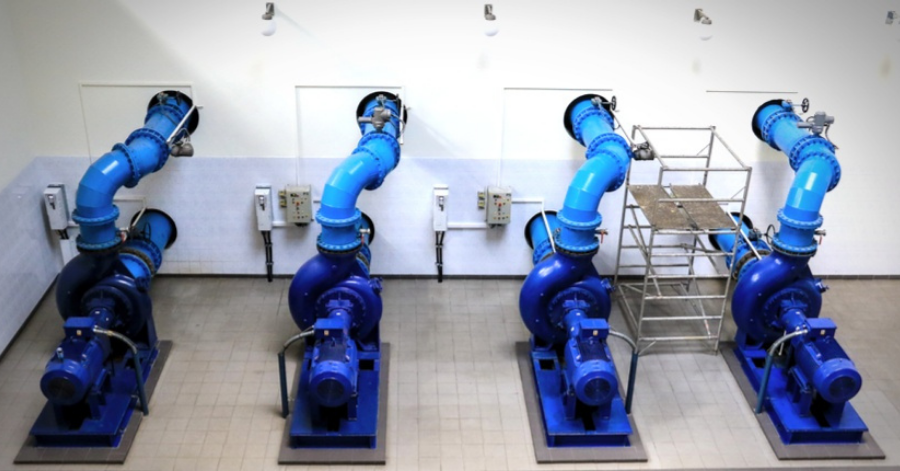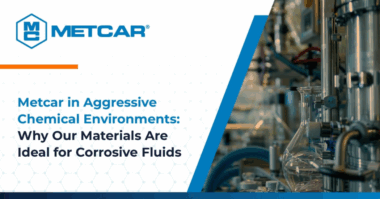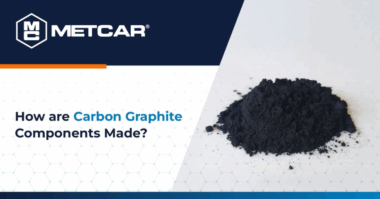There is a complex system at work behind the convenience of having clean drinking water at your fingertips almost instantaneously when you turn on a faucet.
Varying investments in infrastructure and logistics go into transporting water from reservoirs, lakes, and watersheds to your bathrooms and kitchens depending on where you live.
The materials that comprise every infrastructure, including pipelines and pumps, are key; they must be approved for use in food and drug applications and be safe for use in potable water systems.
As a durable material commonly used in severe applications, numerous carbon graphite grades are certified for use in municipal and private facilities. In fact, many water utility companies rely heavily on carbon graphite to get drinking water where it needs to go.
How Does Clean Drinking Water Get To Our Homes?
Generally, gravity reliably gets water where it needs to be. Since water naturally flows to a point of lower elevation given an open pathway, our water usually originates from sources like water towers or high-elevation dams.
Water towers in New York City are an excellent example of this effect. If you are in New York City, you’ll notice that buildings with less than ~6 stories often do not have a water tower on their rooftops. This is because NYC gets its water from reservoirs that are at a level approximately equal to the height of a six-story building.
As a result, pumps are not necessarily required to transport water to a rooftop water tower where it ultimately flows down to the rooms within these buildings; gravity is able to do the job all by itself.
Water Pumps: When Gravity Doesn’t Hold Water
The water supply for buildings that are taller than the elevation of their water source, on the other hand, has to be brought up to a water tower by means of a water pump. A water tower is kept nearly full at all times, so that gravity is able to bring the water to rooms below at the turn of a faucet.

Since not all drinking water is conveniently located at an elevation above our sinks and bathtubs, pumps play a critical role in the distribution of our water. And where there are pumps, carbon graphite is a preferred material.
3 Reasons Why Carbon Graphite Is Preferred For Your Drinking Water
Carbon graphite is often chosen for mechanical seals and bearings within freshwater pumps due to a number of special carbon graphite qualities.
1. Wear-Resistant
First, carbon graphite bearings operate more reliably and remain more durable in the presence of water. Although carbon graphite is a self-lubricating material and can operate reliably in dry-running environments as well, adding water to the equation improves carbon graphite’s wear resistance considerably, which is not the case with most other bearing materials. This is due to the formation of a thin hydrodynamic film between carbon graphite and the shaft running against it.
To aid in the formation of this film, carbon graphite manufacturers often use impregnated carbon graphite grades for water applications to make the material impervious. Since impervious grades are nonporous and don’t allow water to penetrate the material, they are able to maintain a sufficiently thick hydrodynamic film when in use.
The thickness of this film is critical. It is important to note that carbon graphite bearings can operate without galling/seizing even with the very thin hydrodynamic film that water creates, which is only approximately 2 microns thick (or 0.00008”).
Traditional metal bearings will very likely seize with such a thin film. The slight metallic attraction between the metal-bearing and the metal shaft often renders the hydrodynamic water film too thin to prevent seizing/galling. This is why they require oil or grease lubrication, which typically provides a film of about 30 microns (or 0.012”).
2. Hygienic
Another notable benefit of using an impervious carbon graphite grade is that bacteria is unable to grow without porosity. This is clearly a critical characteristic since we are dealing with drinking water after all.
Since maintaining hygienic conditions is the primary concern when designing potable water systems, the fact that oil or grease lubricants are not necessary for the successful operation of carbon graphite bearings and seals is key. Keeping lubricants out of drinking water is a good thing (for obvious reasons).
3. Certified
So, how do we guarantee that carbon graphite is safe for use in potable water applications? Carbon Graphite ensures we’re not in deep water with the FDA. In the USA, the Food and Drug Administration (FDA) regulates most aspects of food, beverage, and drug production/distribution.
Most materials need the FDA’s stamp of approval before they can be used in these types of applications, carbon graphite included.
In order for the FDA to deem a material to be Generally Recognized as Safe (GRAS), there must be adequate proof that the material can safely be used in food, beverage, and drug applications (this includes potable water applications).
Through both historical experience and material testing, impervious carbon graphite grades have been granted GRAS approval. This is a direct result of the material properties described previously.
Similar organizations around the world also set forth guidelines as to what can and cannot be used in potable water applications. For example, the Water Regulations Advisory Scheme (WRAS) is an approval required for drinking water treatment devices in the UK and Northern Ireland. Similar to the FDA’s GRAS approval, there are certain carbon graphite grades that have WRAS approvals as well.
The hygienic requirements of potable water systems and maintaining these requirements are important to the manufacturers of carbon graphite.
Finding The Right Carbon Graphite Grade
Over the years, carbon graphite grade development has catered to these requirements largely due to the fact that carbon graphite is such an integral component of potable water systems.
While there are many grades approved for use in these systems, each grade is typically tailored to a specific application.
Speaking to a carbon graphite manufacturer directly is the best way to ensure you are using the optimal carbon graphite grade for your project.




